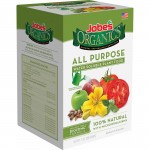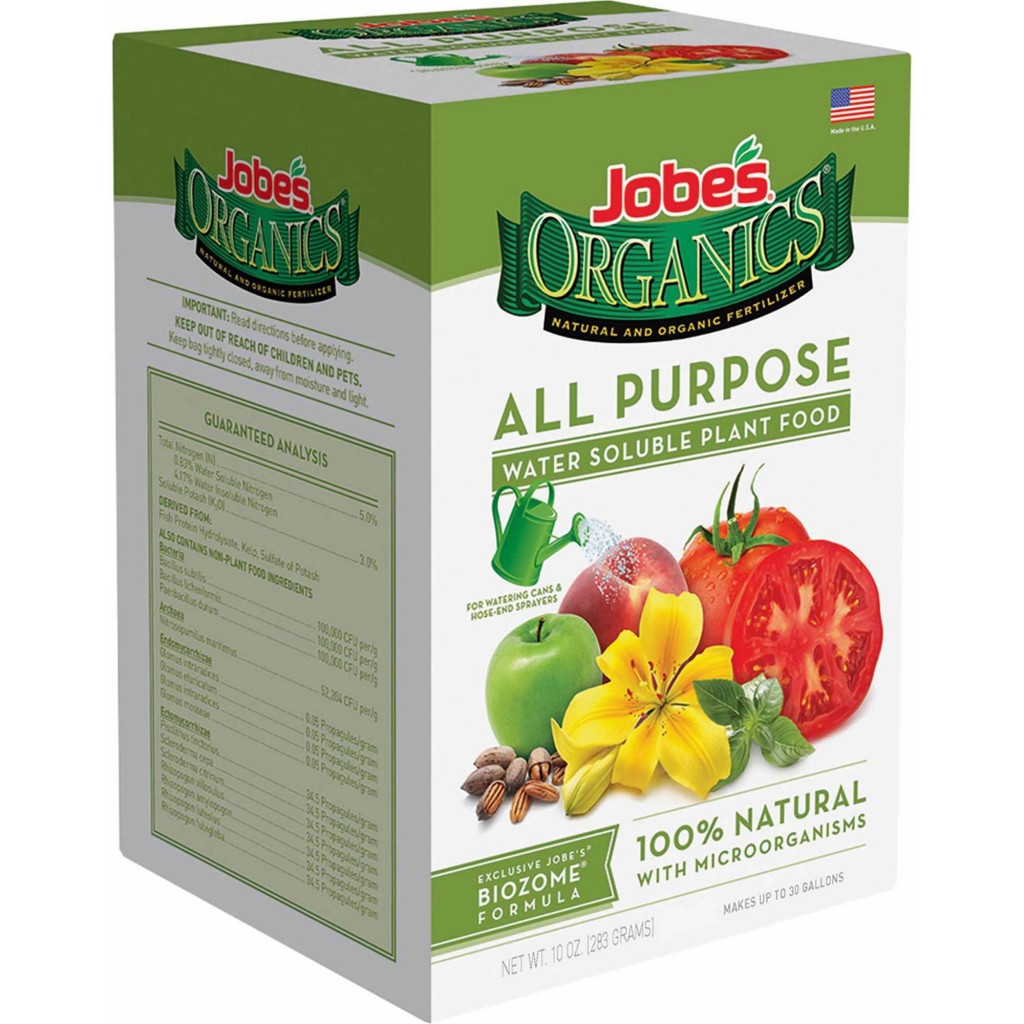Every fertilizer package, whether it is organic fertilizer, such as Jobe’s Organics, or a synthetic fertilizer, has a label that gives information about the contents of the package. In many industries, you learn that “the label is the law,” and it is. Labels tell how to properly use fertilizer—if it needs to be diluted, whether you should water right after application, what time of year it should be applied, fertilizer ingredients(or guaranteed analysis), and special precautions. The package always spells out the percentage of each of the main three nutrients in all fertilizers, which are Nitrogen-N, Phosphorous-P, and Potassium-K. Other information on the label includes what the fertilizer is made from (feather meal, bone meal, and so forth), the amounts of other nutrients in the package, and how much of the package contents are other non-nutrient ingredients. Here’s how to read a fertilizer label.
The package always spells out the percentage of each of the main three nutrients in all fertilizers, which are Nitrogen-N, Phosphorous-P, and Potassium-K. Other information on the label includes what the fertilizer is made from (feather meal, bone meal, and so forth), the amounts of other nutrients in the package, and how much of the package contents are other non-nutrient ingredients. Here’s how to read a fertilizer label.
Sample Fertilizer Label Text
12-4-8
Ready To Use All-Purpose Plant Food
Net Weight 4lb. 12oz. (2.15kg)
GUARANTEED ANALYSIS
Total Nitrogen (N)………………………………………………………………12%
12.0% Urea Nitrogen
Soluable Potash (K2O)………………………………………………………….8%
Available Phosphate (P2O5)………………………………………………….4%
Manganese (Mn)……………………………………………………………..0.05%
0.05% Chelated Manganese (Mn)
Zinc (Zn)…………………………………………………………………………0.05%
0.05% Chelated Zinc (Zn)
Inert Ingredients…………………………………………………………………76%
KEEP OUT OF REACH OF CHILDREN AND PETS
*****
What it all Means
Type of fertilizer
“Ready to use” means just that. It can be applied straight out of the package. If something is concentrated it means it needs to be diluted before you can use it.
Intended use
In this case, the fertilizer’s use is “All Purpose Plant Food.” This is a general fertilizer that can be used on flowers, fruits, vegetables, and lawns.
Fertilizer analysis (12-4-8 for this example)
Every fertilizer has three numbers on the bag, separated by dashes. This is called the analysis, or sometimes the N-P-K number. The first number is the percentage of Nitrogen in the fertilizer, the second number is the percentage of Phosphorous, and the third number is the percentage of Potassium. This number is also a ratio. For example, a fertilizer with analysis 8-8-8 has a ratio of 1:1:1; in other words, the same percentage of available Nitrogen, Phosphorous, and Potassium in the fertilizer. A 12-4-8 fertilizer has three parts Nitrogen to one
part Phosphorous and two parts Potassium.
Nitrogen content
This number indicates the percentage of Nitrogen in the fertilizer. In this example fertilizer, a 4-pound bag with 12 percent Nitrogen has .48 pounds of Nitrogen.
Phosphorous content
This shows the amount of Phosphorous in the fertilizer.
Potassium content
This number shows the amount of Potassium in the fertilizer. This fertilizer example has .32 pounds of Potassium in a 4-pound bag. These numbers are important because you will often read directions about fertilizing that indicate how many pounds per square feet you need to apply. If you were using this fertilizer and you needed to apply 2 pounds of Potassium per 1,000 square feet, you would need 6.25 bags.
Nutrients other than N-P-K
Many fertilizers, particularly organic fertilizers from Jobe’s Organics, contain micronutrients, which are other nutrients besides N-P-K that plants need in smaller amounts. Specialty fertilizers usually have more of these than general fertilizers. For example, citrus fertilizers may have more iron in their formulas.
Other ingredients
Other ingredients, or inert ingredients, are added to the fertilizer mix to make it easier to spread. Those ingredients don’t affect plant growth.
Cautions or Warnings
Most fertilizers, organic or not, will have a warning to “keep out of reach of children.” Some fertilizers or pest control chemicals will give a time to stay off the grass or wait to harvest after it is applied. Remember, just because a product is organic, doesn’t mean it is safe to eat. Hence the warning about keeping away from children and pets.
Application Information
With all fertilizer more is not better. You will need to apply the correct amount of fertilizer to the area you are feeding. If you apply more you risk overloading the organisms in the soil, which won’t be beneficial to plant growth. All fertilizer labels include instructions for application—when to apply it (what time of year), how to apply it (by mixing it in water, sticking a spike in the soil, or raking it into the soil), whether you need to water after applying it, and so forth.
Other Information
Many Jobe’s Organics products have beneficial bacteria or fungi added as part of the formula. In those cases, the bacterium will also be listed, along with the amount present in the fertilizer formula.

